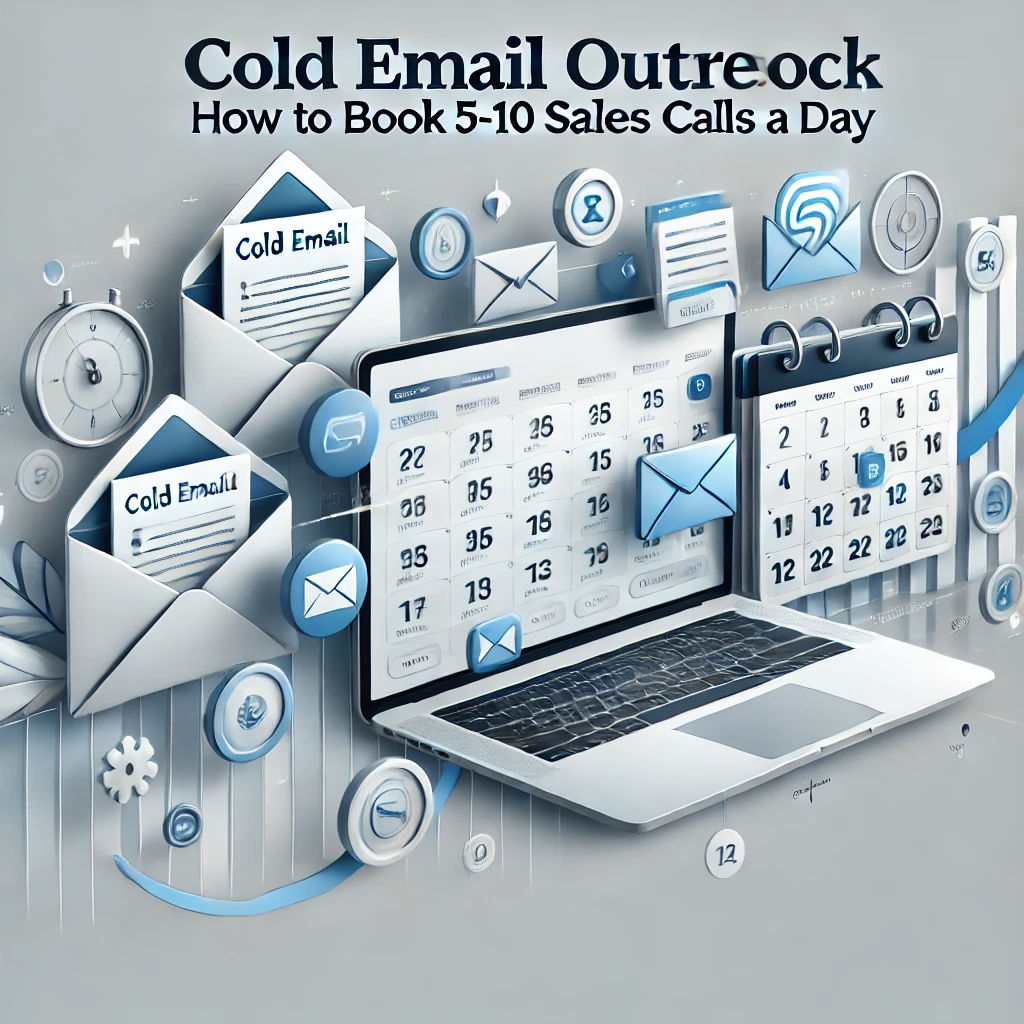
Booking sales calls isn’t easy. You might be sitting at your desk, staring at an empty calendar, wondering why no one is responding to your outreach. Maybe you’ve tried cold emails, but it feels like you’re just sending messages into a void. You’re not alone—most people find it tricky to break through the noise and get prospects to actually hop on a call.
But here’s the thing: cold email outreach works. When done right, it can get you those 5-10 calls a day that can seriously boost your business. And you don’t need to be a tech wizard or have a huge budget. You just need the right system.
In this article, I’ll show you exactly how to build a cold email system that works. By the end, you’ll know how to craft emails that get responses, how to target the right people, and how to keep your inbox full of interested prospects. Ready? Let’s dive in.
Why Cold Email Outreach is a Game Changer
Think about cold email outreach like fishing. If you cast your line in the right spot with the right bait, you’ll catch something. Cold emailing is the same. It’s about sending the right message to the right person at the right time. When that happens, boom—you’ve got a booked sales call.
The magic of cold email is that you can reach people you wouldn’t meet otherwise. Maybe they haven’t heard of your business or even thought about the solution you offer. But when your email pops into their inbox, it’s your chance to grab their attention and get them curious enough to talk.
Step-by-Step Guide to Booking 5-10 Sales Calls a Day
1. Nail Your Offer First
Before you send a single email, ask yourself: what’s in it for them? If you’re just another “Hey, buy my stuff!” email, you’ll get ignored. Your offer needs to be something that makes people think, “Yeah, I need that.”
Quick Real-Life Example:
Imagine you run a lead generation service, helping businesses get new customers. Instead of saying, “We generate leads,” try something like, “We’ll book you 5 sales calls a week—or you don’t pay.” That’s a no-brainer for a business owner who wants more customers but doesn’t want to waste money.
Three ways to structure your offer:
- Pay-Per-Call: You only charge if they get a booked sales call.
- Pay-Per-Lead: Charge for each interested lead you deliver.
- Money-Back Guarantee: Charge a monthly fee, but offer a refund if you don’t deliver a set number of calls.
The key? Make it low risk for them. The easier it is for someone to say “yes” to your offer, the more calls you’ll book.
2. Set Up the Right Tools
Just like you wouldn’t go fishing without a rod, you need the right tools for cold email outreach. First, you’ll need a domain for sending emails (so you don’t get flagged as spam). Then, you need to warm up those email accounts so Google and other email providers trust you.
How to Set It Up:
- Buy a main domain: This is your business domain (e.g.,
yourcompany.com). - Get subdomains: Use variations like
sales.yourcompany.comto send emails. This keeps your main domain safe if something goes wrong. - Use Google Workspace: Set up multiple email accounts under your subdomains.
- Warm up your emails: Use a tool like Smartlead to gradually send emails, so you don’t end up in the spam folder.
Warming up your email is like slowly turning up the heat on a stove. If you go too fast, things burn. But if you ease into it, your emails will land in the right place—in your prospect’s inbox.
3. Target the Right People
You could have the best email in the world, but if you send it to the wrong person, it won’t work. That’s why it’s crucial to target the right people.
Break It Down Like This:
- Revenue: Look for companies making $1M to $20M a year. These are usually big enough to need help but small enough to move fast.
- Employee Count: Focus on companies with fewer than 100 employees. Big corporations often take forever to make decisions.
- Industry: Pick industries you understand. If you’ve worked in marketing or software, start there. It helps if you can speak their language.
- Location: Sometimes it’s easier to book calls with local businesses or companies in a specific region.
Example:
Let’s say you’ve worked in marketing for years. Instead of trying to reach out to random businesses, you target small marketing agencies. You know their pain points, you know how to talk to them, and you know what kind of offer will grab their attention.
4. Build a Solid Lead List
You’ve got your offer and your target. Now, you need a list of people to email. Tools like Apollo and LinkedIn Sales Navigator make this easy by helping you find the right contacts. Just make sure you verify their emails before sending anything.
Lead Building Process:
A[Identify Niche] --> B[Scrape Leads on Apollo/LinkedIn]
B --> C[Verify Emails with MillionVerifier]
C --> D[Import Leads to Google Sheets]
D --> E[Upload to Sending Tool]
Using tools to scrape leads can save hours, but don’t forget to clean up your list. If you send emails to invalid addresses, it’ll hurt your deliverability.
5. Write Emails That Get Responses
Once you’ve got a solid list, it’s time to write your emails. Keep them short, personal, and to the point. Here are two simple methods that work.
Method 1: The 3 C’s (Compliment, Case Study, Call to Action)
- Compliment: “I saw your company just launched a new product. Congrats!”
- Case Study: “We’ve helped businesses like yours book 10 sales calls a week.”
- Call to Action: “Would you be open to a quick chat next week?”
Method 2: The One-Liner
Sometimes, less is more. Send one line with a question, like:
- “Would booking 5-10 extra sales calls a week be valuable to your business?”
Key Tip:
Always follow up. People are busy, and most won’t respond to the first email. Plan to send 3-4 follow-ups every few days. Something simple like, “Just bumping this up in case you missed it,” works wonders.
6. Launch and Track Your Campaign
After setting everything up, it’s time to send your emails. Use tools like Smartlead or Lemlist to manage your campaigns. These tools let you send emails at scale, track opens, and manage replies.
Monitor your results. If a subject line doesn’t get a good open rate (at least 40%), tweak it. If your response rate is low, adjust your offer or messaging. This isn’t a “set it and forget it” system—you need to keep an eye on it and make adjustments as needed.
7. Turn Replies into Sales Calls
Once you start getting replies, don’t leave them hanging. Push to schedule a call as soon as possible. Offer a few time slots or send a Calendly link to make scheduling easy.
Real-Life Scenario:
Imagine you get an email from a business that says, “I’m interested, but can you tell me more?” You could respond with more info, but don’t stop there. Push for the call: “I’d love to explain more over a quick call. Does Thursday at 3 PM work for you?”
People are more likely to commit when you give them clear next steps.
8. Keep Scaling Your System
Once you’ve got the hang of it and start booking those 5-10 calls, scale it up. Add more domains, send more emails, and keep refining your process. As long as you’re delivering value and targeting the right people, you’ll keep seeing results.
Final Thoughts
Cold email outreach can feel like shouting into the void if you’re not doing it right. But with a solid system in place, you can consistently book 5-10 sales calls a day. It all comes down to having a strong offer, targeting the right people, and making your emails stand out.
Start small, follow the steps, and before you know it, your calendar will be packed with calls from interested prospects.
